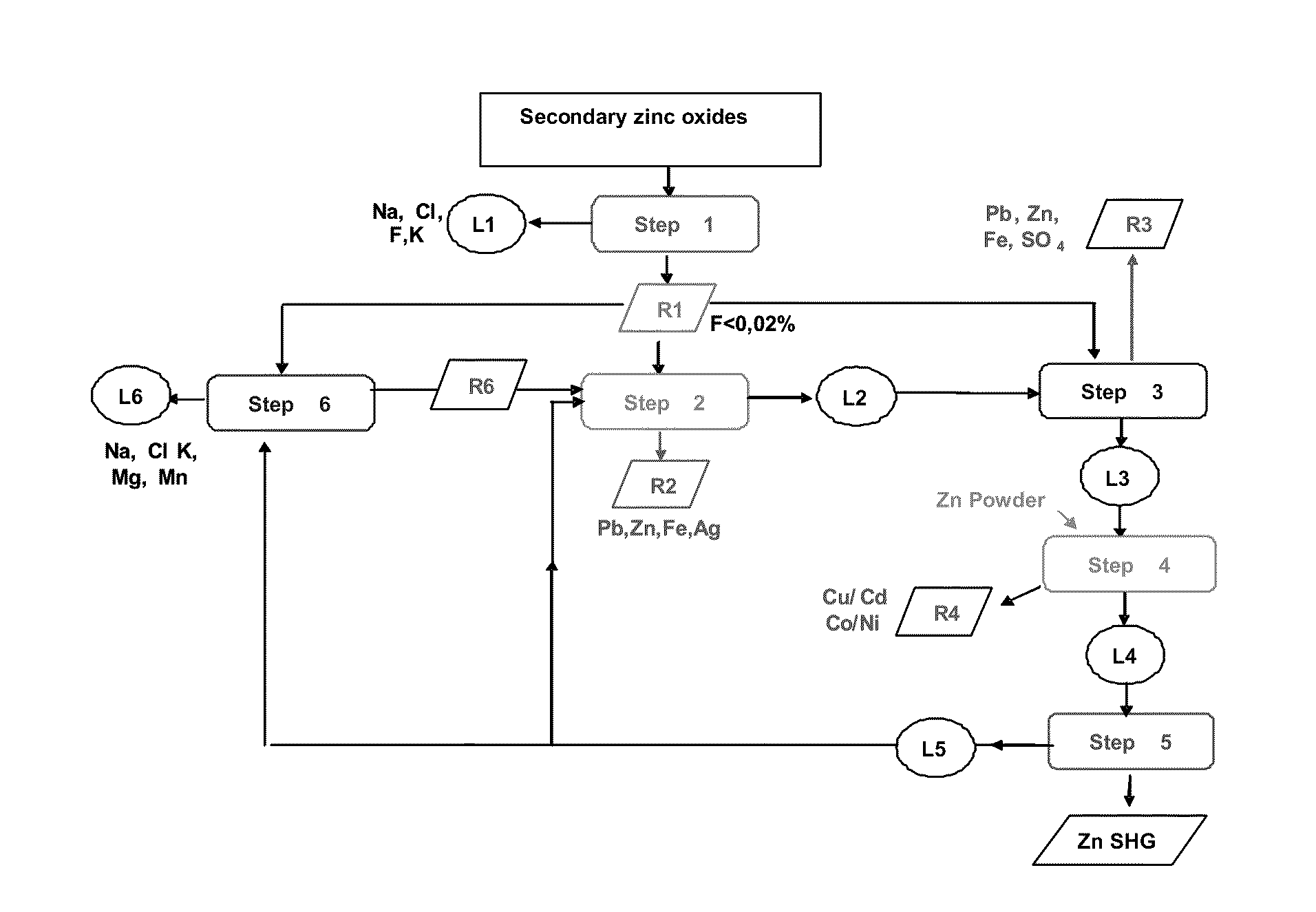Hydrometallurgical method for the reuse of secondary zinc oxides rich in fluoride and chloride
a technology of fluoride and chloride, applied in the direction of mercury compounds, instruments, chemistry apparatus and processes, etc., to achieve the effect of less cost and constant and better control conditions
- Summary
- Abstract
- Description
- Claims
- Application Information
AI Technical Summary
Benefits of technology
Problems solved by technology
Method used
Image
Examples
Embodiment Construction
[0065]The secondary oxides which may be used in a method according to the invention, of course have variable contents of different elements, if necessary present under various forms.
[0066]In the example described below with reference to FIG. 1, these starting secondary oxides have the following composition:
[0067]Zn˜54.8%, Fe˜3.6%, Pb˜6.7%, Cl˜7.2%, F˜0.3%, Cu˜0.14%, Cd˜0.16%, Ni˜0.006%, Co˜0.001%, Mg˜0.2%, Na˜2.8%, K˜2.5%, Mn˜0.45%, Ag˜0.016% (mass %).
[0068]As a rule, removal of halides, in particular of chlorides and fluorides, present in the dusts, is carried in two big steps: step 1 and step 3.
[0069]The first step (step 1) of a preferred embodiment of the method is a washing step wherein the solid undergoes three successive washings with sodium carbonate (160 g of Na2CO3 / kg of oxide) at well-defined temperatures for each washing. During the first washing, the temperature of the solution is about 60° C. After decantation and separation, the solid undergoes a second washing at abou...
PUM
| Property | Measurement | Unit |
|---|---|---|
| temperatures | aaaaa | aaaaa |
| temperatures | aaaaa | aaaaa |
| temperature | aaaaa | aaaaa |
Abstract
Description
Claims
Application Information
 Login to View More
Login to View More - R&D
- Intellectual Property
- Life Sciences
- Materials
- Tech Scout
- Unparalleled Data Quality
- Higher Quality Content
- 60% Fewer Hallucinations
Browse by: Latest US Patents, China's latest patents, Technical Efficacy Thesaurus, Application Domain, Technology Topic, Popular Technical Reports.
© 2025 PatSnap. All rights reserved.Legal|Privacy policy|Modern Slavery Act Transparency Statement|Sitemap|About US| Contact US: help@patsnap.com


